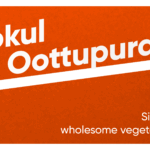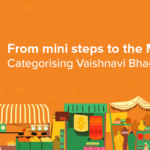Haleem is more than just a dish—it’s a tradition, a celebration, and a symbol of culinary heritage that has traveled across centuries. This rich, savory, and slow-cooked delicacy is enjoyed worldwide, especially in South Asia and the Middle East. Made with wheat, lentils, meat, and aromatic spices, the dish is known for its unique texture and deep, comforting flavors.
It holds a special place in festive cuisine in India, particularly during Ramadan. After a long day of fasting, a nourishing bowl provides the perfect blend of protein, fiber, and energy. In cities like Hyderabad, Mumbai, and Kolkata, the aroma of the dish fills the streets during Ramadan, drawing in food lovers eager to break their fast with this hearty dish. But where did this beloved dish originate? Let’s take a journey through Haleem history and explore its Persian roots.
What is Haleem?
Haleem is a slow-cooked, protein-rich dish made by blending meat (usually mutton or chicken), wheat, lentils, ghee, and an assortment of fragrant spices. The mixture is simmered for hours until it reaches a smooth, paste-like consistency. This labor-intensive cooking process allows the flavors to meld beautifully, resulting in a hearty and delicious dish.
Topped with caramelized onions, fresh coriander, lemon juice, and fried cashews, the dish is a wholesome meal that’s both nutritious and satisfying. It is especially popular during Ramadan, as it provides sustained energy for those observing fasts.
The Persian Roots: Exploring the Origin of Haleem
Haleem traces its roots back to Persia (modern-day Iran), where a dish known as Harees was commonly prepared. Harees, made from wheat and meat, was a thick, porridge-like dish that provided sustenance for warriors and travelers during long journeys. These early versions were packed with protein and essential nutrients, making it an ideal meal for those needing lasting energy.
As Persian culture and cuisine spread across the Middle East and Central Asia, Harees evolved into different regional variations. Over time, it transformed into Haleem, incorporating local spices and cooking techniques that made it even more flavorful.
Haleem’s Journey to India: A Historical Perspective
The arrival of this dish in India can be traced back to Arab traders and the Mughal Empire. During the medieval period, Arab merchants introduced the dish to the Indian subcontinent, where it quickly gained popularity. The Mughals, known for their love of rich and elaborate dishes, adopted Haleem and gave it an Indian twist by adding local spices and lentils.
By the time it became popular in Hyderabad—thanks to the influence of the Nizams—it had developed into a signature dish with a distinct South Indian touch. Over the years, the slow-cooked porridge evolved further, with each region in India creating its variation of this dish.
Different Types of Haleem: Regional and Modern Variations
The dish has adapted to various regions and tastes, leading to the emergence of different types of Haleem. Here are some of the most popular variations:
1. Hyderabadi Haleem
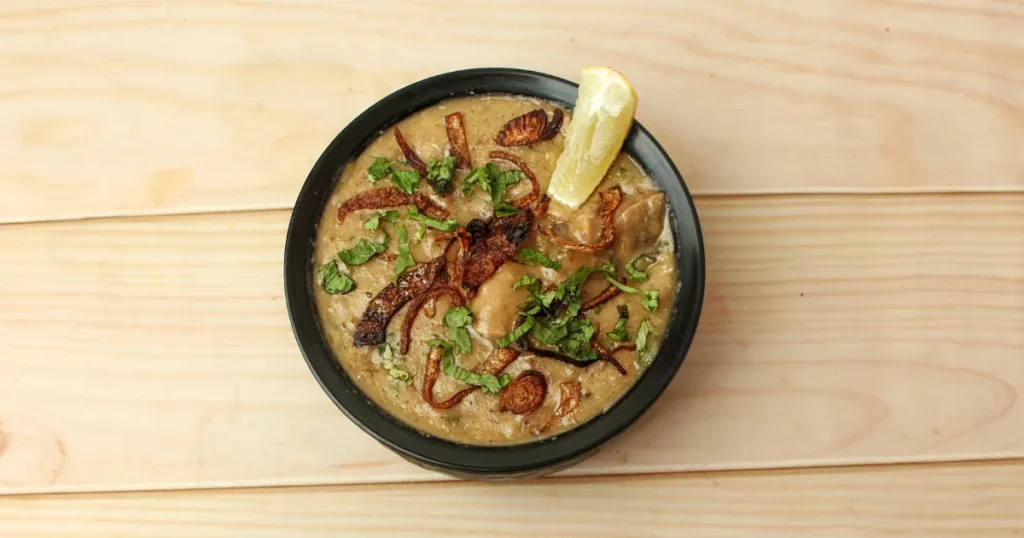
Perhaps the most famous version, this is a delicacy that has earned Geographical Indication (GI) status, recognizing its unique preparation method. This version is made with mutton, wheat, lentils, and an aromatic mix of desi ghee, saffron, and dry fruits. Cooked for hours in large cauldrons over a wood fire, the result is a smooth, creamy dish bursting with rich flavors.
2. Chicken Haleem
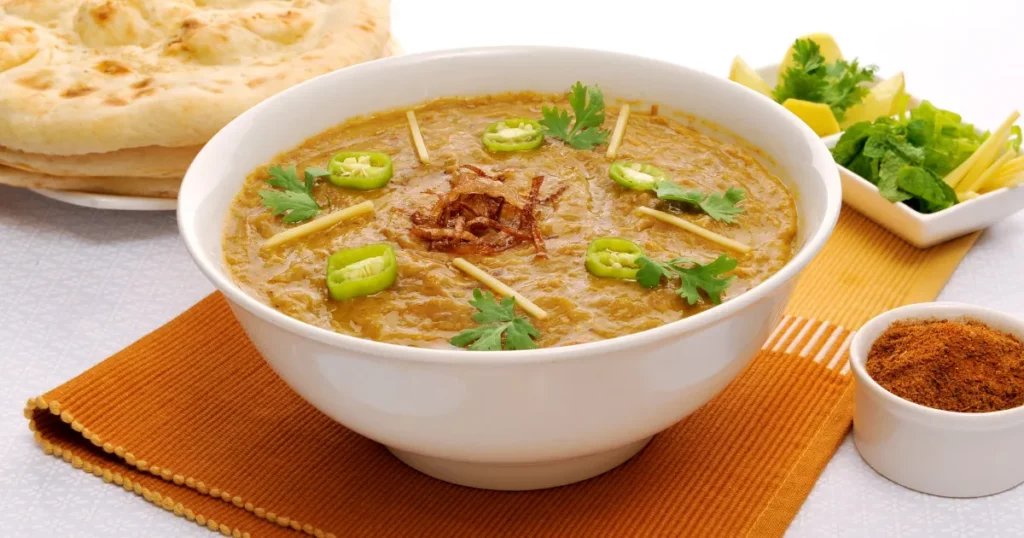
For those who prefer a lighter version, this is a popular alternative. It follows the same slow-cooking method but uses chicken instead of mutton. It’s equally flavorful and is enjoyed by many as a healthier option.
3. Khichra (Bohra Haleem)
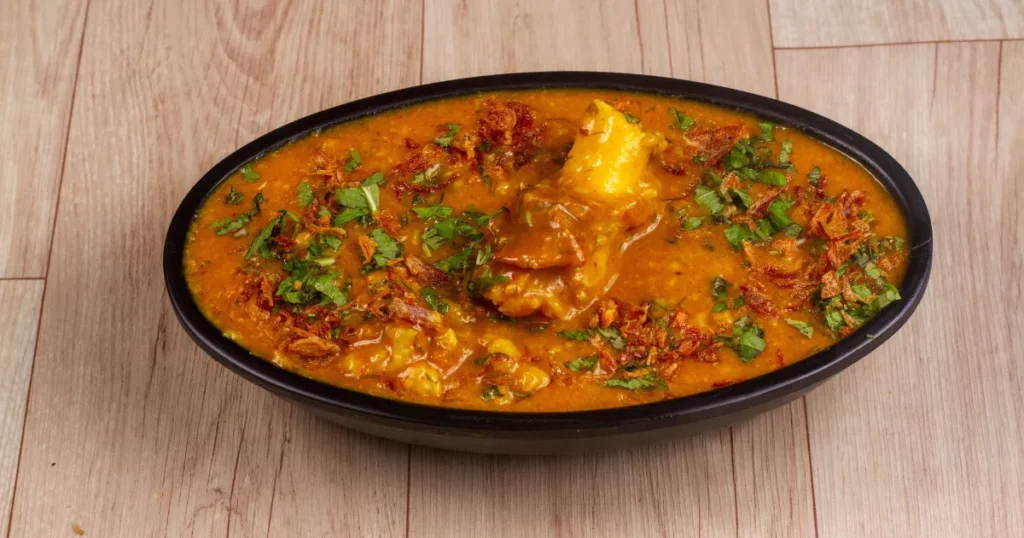
Unlike traditional version, this is blended into a paste-like consistency, Khichra (popular among the Bohra community) retains the distinct textures of wheat, lentils, and meat. This version is more similar to a stew, with visible chunks of meat and grains, making it a unique variation among the different types of Haleem.
Craving Authentic Haleem? Order Now on Swiggy and Enjoy It at Home!
Nothing beats the taste of freshly prepared Haleem, and thanks to online food delivery services, you don’t have to wait for a special occasion to enjoy it. Whether you’re craving Hyderabadi, Chicken Haleem, or Bohra Khichra, you can now Order Food Online on Swiggy and have a piping hot bowl delivered straight to your doorstep.
With just a few clicks, you can experience the richness of this age-old dish from the comfort of your home. Don’t wait—satisfy your Haleem cravings today!
Conclusion
From its Persian origins as a warrior’s meal to becoming a beloved dish in India, Haleem history is a testament to how food evolves across cultures. Today, it is a must-have during Ramadan and is enjoyed by people of all backgrounds. With its rich flavors, high nutritional value, and cultural significance, this continues to be a dish that brings people together.
Whether you prefer the authentic Hyderabadi version, the comforting Chicken form, or the traditional Khichra, one thing is certain—this dish is here to stay. So why wait? Order Food Online and relish this iconic delicacy today!
FAQ
1. What is the difference between Haleem and Harees?
While both dishes have Persian roots, Haleem is a spicier and more refined version of Harees. Harees is a simpler dish made with just wheat, meat, and minimal seasoning, whereas Haleem includes lentils, ghee, and a variety of spices, giving it a richer taste and smoother texture.
2. Haleem is made of which meat?
The traditional version is made with mutton (goat meat), but variations with chicken and beef are also popular. In some regions, vegetarian versions with soya or jackfruit are even available.
3. When is Haleem traditionally eaten?
Haleem is especially popular during Ramadan, as it provides long-lasting energy for those observing fasts. However, it is also enjoyed at special occasions, weddings, and festivals throughout the year.
Author Bio
Satisfying your cravings, one bite at a time. Discover the best eats, trends, and uncover the hidden gems with us to make your online ordering or dining experience a memorable one.







